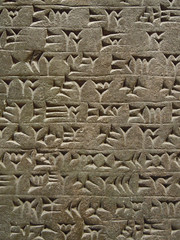From Hunting and Gathering to Civilizations, 2.5 million-1000 B.C.E.: Origins
| 10420437629 | Hunting and Gathering | Means of obtaining subsistence by humans before the mastery of sedentary agriculture; normally typical of tribal social organization |  | 0 |
| 10420437630 | Civilization | Societies with reliance on sedentary agriculture, ability to produce food surpluses, and existence of nonfarming elites, along with merchant and manufacturing groups | 1 | |
| 10420437631 | Neolithic | The New Stone Age between 8000 and 5000 B.C.E.; period in which adaptation of sedentary agriculture occurred; domestication of plants and animals accomplished |  | 2 |
| 10420437632 | Nomads | Cattle- and sheep-herding societies normally found on the fringes of civilized societies; commonly referred to as "barbarian" by civilized societies |  | 3 |
| 10420437633 | Culture | Combination of ideas, objects, and patterns of behavior that result from human social interaction |  | 4 |
| 10420437634 | Pastoralism | A nomadic agricultural lifestyle based on herding domesticated animals; tended to produce independent people capable of challenging sedentary agricultural societies |  | 5 |
| 10420437635 | Bronze Age | From 4000 to 3000 B.C.E.; increased use of plow, metalworking; development of wheeled vehicles, writing |  | 6 |
| 10420437636 | Mesopotamia | Literally "between the rivers"; the civilization that arose in the alluvial plain of the Tigris-Euphrates river valleys |  | 7 |
| 10420437637 | Potter's wheel | A technological advance in pottery making; invented circa 6000 B.C.E.; encouraged faster and higher-quality ceramic pottery products |  | 8 |
| 10420437638 | Sumerians | People who migrated into Mesopotamia circa 4000 B.C.E.; created the first civilization within the region; organized area into city-states |  | 9 |
| 10420437639 | Cuneiform | A form of writing developed by the Sumerians using a wedge-shaped stylus and clay tablets |  | 10 |
| 10420437640 | City-state | A form of political organization typical of Mesopotamian civilization; consisted of agricultural hinterlands ruled by an urban-based king |  | 11 |
| 10420437641 | Ziggurats | Massive towers usually associated with Mesopotamian temple connections |  | 12 |
| 10420437642 | Babylonian Empire | Unified all of Mesopotamia circa 1800 B.C.E.; collapsed due to foreign invasion circa 1600 B.C.E. |  | 13 |
| 10420437643 | Hammurabi's Code | Earliest known written set of laws, created by the Babylonian leader |  | 14 |
| 10420437644 | Pharaoh | The term used to denote the kings of ancient Egypt |  | 15 |
| 10420437645 | Pyramids | Monumental architecture typical of Old Kingdom Egypt; used as burial sites for pharaohs |  | 16 |
| 10420437646 | Hieroglyphs | Form of writing developed in ancient Egypt; more pictorial than Mesopotamian cuneiform |  | 17 |
| 10420437647 | Kush | African state that developed along the upper reaches of the Nile circa 1000 B.C.E.; conquered Egypt and ruled it for several centuries | 18 | |
| 10420437648 | Monotheism | The exclusive worship of one god; introduced by Jews into Middle Eastern civilization |  | 19 |
| 10420437649 | Phoenicians | Seafaring civilization located on the shores of the eastern Mediterranean; established colonies throughout the Mediterranean |  | 20 |
| 10420437650 | Harappa and Mohenjo Daro | Major urban complexes of Harappan civilization; laid out on planned grid pattern |  | 21 |
| 10420437651 | Aryans | Indo-European nomadic, warlike, pastoralists who replaced Harappan civilization, brought early ideas of caste system to India |  | 22 |
| 10420437652 | Huanghe (Yellow) River Basin | Site of the development of sedentary agriculture in China |  | 23 |
| 10420437653 | Shang | 1st Chinese dynasty |  | 24 |
| 10420437654 | Oracles | Shamans or priests in Chinese society who foretold the future through interpreting animal bones cracked by heat; inscriptions on bones led to Chinese writing |  | 25 |
| 10420437655 | Paleolithic | The period that ended about 3,000 years after the end of the last Ice Age, it lasted until about 10,000 years ago. (Old Stone Age) The period of the Stone Age associated with the evolution of humans. It predates the Neolithic period. |  | 26 |
| 10420437656 | Path of migration for humans during Paleolithic era | From Africa to Eurasia, Australia, and the Americas | 27 | |
| 10420437657 | Eglitarian | Believing in the equality of all peoples | 28 | |
| 10420437658 | Humans developed a wider range of ____ specially adapted to different environments from tropics to tundra | tools | 29 | |
| 10420437659 | Neolithic Revolution | Global conversion to agriculture over hunter-gatherer lifestyles |  | 30 |
| 10420437660 | Patriarchy | Father based, culture in which males are dominant |  | 31 |
| 10420437661 | Pastoralists were often the developers and disseminators of of ____ and ___ that transformed warfare in agrarian civilizations | new weapons modes of transportation | 32 | |
| 10420437662 | name one mode of new transportation by the pastoralists | Chariots Horseback riding | 33 | |
| 10420437663 | ____ arose independently in all early civilization and then were diffused to associated regions | systems of record keeping | 34 | |
| 10420437664 | _____ developed in this period continued to have strong influences in later periods | New religious beliefs | 35 |

